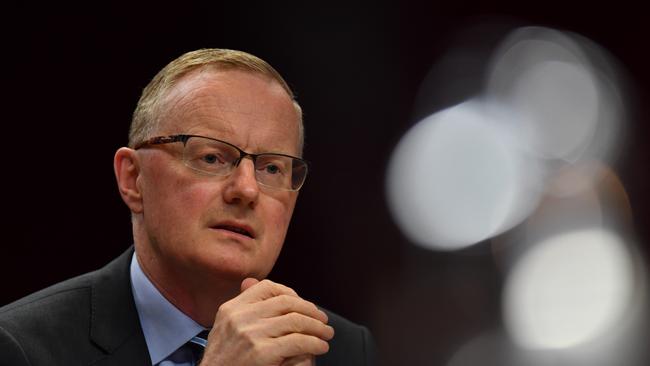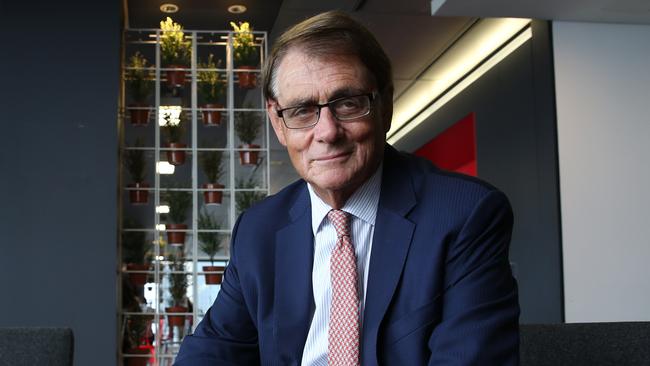Terry McCrann: RBA easing bias unusual and hot
The Reserve Bank has adopted an easing bias — but it’s a rather opaque easing bias and it’s unusual in that it’s never previously been adopted in the nearly 30 years we have been getting these monthly interest rate decisions, writes Terry McCrann.
Terry McCrann
Don't miss out on the headlines from Terry McCrann. Followed categories will be added to My News.
The Reserve Bank has adopted an easing bias — but it’s a rather opaque easing bias because it’s an ‘unusual’ easing bias.
Indeed, it’s so unusual that it’s never previously been adopted by the RBA in the nearly 30 years we have been getting these monthly — and public — interest rate decisions.
It’s an unusual bias for — very — unusual times. The RBA will cut its official interest rate if the jobless rate does not fall; and it will need to start falling pretty quickly or at least show clear signs that it will fall. Plus an asterisk.
The one qualification is if inflation suddenly kicked up to 0.5-0.6 per cent a quarter. But that in itself introduces a new uncertainty — because we only get the inflation numbers every three months, and the next inflation number is way off at the very end of July.
RESERVE BANK KEEPS CASH RATE ON HOLD

So between now and then we will have two RBA board meetings, in early June after the election and in early July. More critically we will have three employment and jobless releases, with the first coming next week, on Thursday just two days out from the election.
If we got a ‘bad’ number — say, the jobless rate kicking up to 5.2 per cent or more or full-time employment falling statistically significantly, we would get a rate cut at the June meeting.
RBA governor Philip Lowe now does have his finger on the rate cut trigger — and it’s a hair trigger.
But again, let me repeat, none of this — none of it — has got anything to do with the election.
If the RBA — that’s governor, his executive team and his board, which is not just a formalising rubber stamp — had believed an immediate cut, even just 12 days out from the election, was necessary, they would have cut.
Importantly, in deciding it wasn’t necessary, the RBA was implicitly telling us two things that might not seem that obvious.
The big one is that it does not share the doomsday expectations of the more lunatic fringes of the economentariat — using that term very loosely. That for example, the plunge in the property market is going to send the whole economy crashing, via most obviously massive bank bad debts and a serious contraction in consumer spending.
That is to say, the RBA does not believe it had got behind the curve; that it needed to start cutting immediately — and indeed, preferably before Tuesday — to try to head-off the economic tsunami that was about to strike.
Implicitly, it is therefore expecting a relatively benign May employment report. But equally, not a ‘the Trump boom has moved down under’ style one either.

The more sane manifestation of this doomsday expectation were those in the economentariat who after the low March quarter CPI numbers jumped to predicting a May cut followed immediately by a June cut.
Right now even a June cut is unlikely, but the jobs numbers will be determinative.
Westpac’s Bill Evans — who to repeat has been not just the most accurate RBA forecaster among the economentariat, but specifically accurate — had (before Tuesday) forecast the switch to the easing bias (correct) with a rate cut coming in August.
That would have assumed a rate cut coming off either the next inflation data, at the end of July, or the next formal set of RBA forecasts at its early August meeting — or driven by a combination of the two.
The key change is that both of those have become secondary to what will drive the RBA decision-making. They are both secondary — and come belatedly after — those three all-important jobs and jobless reports.
If we got to the August meeting and there’d been no rate cut, the inflation numbers and the new forecasts would not trigger one at the August meeting, because the jobless rate must have fallen below 5 per cent. And I do not mean just to 4.9 per cent on dodgy detail.
Now, the key driver of this RBA shift — that unless the jobless rate falls believably and sustainably to that 4.75 per cent in the forecasts, the RBA will cut and on balance more than once — is driven by the seeming shift in the ‘Philips curve’ link between the jobless and inflation rates.
It’s also got a flavour of President Trump’s America in it. There the jobless rate is down to 3.6 per cent — ours sitting at 5 per cent looks uncomfortably (unnecessarily?) high in comparison.
In the US that low jobless rate is starting to deliver faster rising wages. And it is that which is the RBA’s ultimate goal — getting there by delivering on its mandate to get inflation back into the 2-3 per cent band.
If it can ‘get there’ by leaving the rate at 1.5 per cent, so be it. I personally hope that it does: that despite the easing bias and a finger now on a hair trigger, it doesn’t have to be pulled.
Apart from anything, the rate continuing to stay at 1.5 per cent would tell us in retrospect that things had stayed pretty good in Australia; in a world in which things had also stayed pretty good.
THE US AND CHINA HOLD THE KEY
THE big question, what will really determine where our economy heads over the rest of the year and through 2020 — and thus what will really determine our rates — is what happens to the global economy.
And by global economy we mean the US and China: the only two that matter. Europe and Japan just don’t rate; and in any event how they perform all turns on China and the US anyway.
I suggest the prospects are positive. Both the US real economy and Wall St are looking buoyant — especially as President Trump has tweeted the Fed out of hiking US rates and he will do a trade deal with China.



